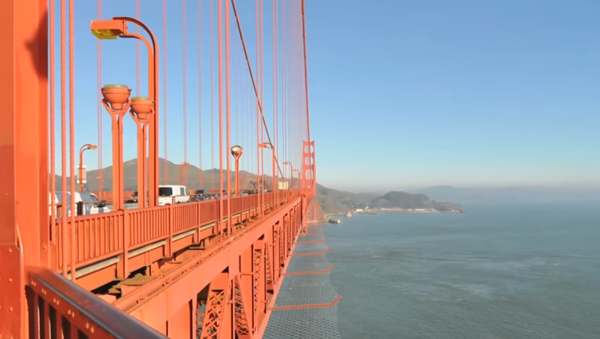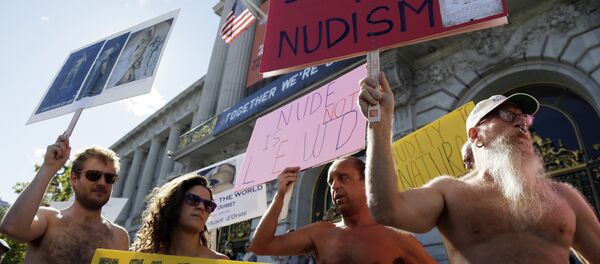A suicide barrier was first called for in 2005 in an open letter published in the San Francisco Chronicle. In 2008, a netting barrier was estimated to cost $40-50 million, a projected cost that has quadrupled since then.
The net will be constructed over the course of the next four years and extend 20 feet from the edges of the bridge. The actual barrier will be a stainless steel mesh along the base of the bridge, another 20 feet below passengers. It will be invisible to anyone not looking directly over the edge.
The bulk of the work will be done at night, when fewer cars are on the road. The project was first approved in 2014, but the start date has been repeatedly pushed back due to debate over both the efficacy of such a measure and the steep $200 million price tag. The project is expected to be finished in 2021.
The ribbon-cutting ceremony for the start of the project included some of the state's most well-known officials, including House Minority Leader Nancy Pelosi and Ranking Member of the Senate Judiciary Committee Dianne Feinstein. "Today we are here to observe a labor of love," Pelosi said.
Other guests included local woman Kimberly Renee Gamboa, the mother of Kyle Gamboa, who leaped off the bridge to his death in 2013. "He was just starting his senior year in high school at Sacramento Waldorf School," Gamboa said, clearly emotional. "It doesn't just happen to the family. It happens to every single person he knew."
In 2016, a total of 39 people committed suicide by throwing themselves from the bridge – but 200 additional suicide attempts were halted by existing suicide prevention measures along the iconic bridge, according to city spokeswoman Priya Clemens. These measures include patrol officers trained in suicide prevention and groups of volunteer patrollers who search for those attempting suicide and prevent them from jumping.
Only one site in the world beats out the Golden Gate Bridge for popularity as a suicide site: the Yangtze River Bridge in Nanjing, China.
In the 80 years since the Golden Gate Bridge opened in 1937, an estimated 1,600 bodies of jumpers have been recovered. The leap has a 98 percent fatality rate and typically leads to a horrific, painful death according to the San Francisco Chronicle: "The physics of inertia being what they are, internal organs tend to keep going. The force of impact causes them to tear loose. Autopsy reports typically indicate that the jumpers have lacerated aortas, livers, spleens, and hearts. Ribs are often broken, and the impact shoves them into the heart or lungs. Jumpers have broken sternums, clavicles, pelvises, and necks. Skull fractures are common."
Suicide nets are believed to be an effective deterrent to prevent jumping. Although there's nothing physically stopping someone from leaping down and then off of the net, suicide attempt survivors frequently mention that they regret leaping the moment their feet leave the ground.
A famous example of this phenomenon is Kevin Hines, who leaped off the Golden Gate Bridge in 2000 but survived. In the 2006 documentary "The Bridge," about suicides off the Golden Gate, Hines said, "there was a millisecond of free fall. In that instant, I thought, what have I just done? I don't want to die. God, please save me."
Or as Kevin Baldwin, who survived a 1985 leap, told the New Yorker: "I instantly realized that everything in my life that I'd thought was unfixable was totally fixable – except for having just jumped."





